and it’s often viewed as a truly ancient artifact. It’s a common thing you see with many older games, including basically any cRPG made before 2000 and many text adventure games. As poser-in-need-of-a-haircut Jason Graves succinctly puts it, “It’s immune from any and all criticism because it’s so ancient, it’s so old, it’s so groundbreaking, and it’s so simple that it’s downright charming. Any sticks and stones that might be hurled this game’s way, it’s immune from all criticism.” And Jason Graves is one of the few RETRO GAMERS who can be seen going to bat for the game…
But I’ve been playing progressively older RPGs. Be afraid 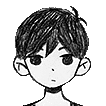
I can’t fully disagree that Dragon Quest is interesting as an artifact. It’s historically important, the way it chops both Wizardry: Proving Ground of the Mad Overlord and Ultima I: The First Age of Darkness precisely in half and glues them together, in the process creating both the console RPG and “JRPG” while totally cutting anything like character building. (from Wizardry it takes the first-person turn-based combat, cursed items and rude dungeons; from Ultima it takes the overworld, commands menu and the king being your home base) I also think it’s worth it to look at the technology of the time and cross-reference that with interviews with Yuji Horii and the gang, to see how games evolved back then. Dragon Quest is a basic CNROM game, a tiny lil cartridge with 64kb of total space, equally split between program and character data. When the devs talk about not being able to include multiple characters due to “memory constraints”, you know they don’t mean RAM, they mean storage space. There aren’t any fancy mapper chips used for the Famicom Dragon Quest releases either, no special RAM or anything on the carts, which makes it even easier to appreciate that when the cart size doubles with Dragon Quest II’s 128kb UNROM cart, the game design way more than doubles in complexity.
While I understand that the quote way up there is more of a statement on its legacy than its quality, I also think the mindset kind of dismisses both historical and normal game analysis (as much as any “game analysis” can be normal 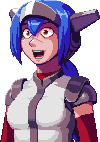 ) of this goofy little 64k Famicom game and the ways it was a strong piece of design. Designed by necessity to get the most out of what the team was working with and could do at the time.
) of this goofy little 64k Famicom game and the ways it was a strong piece of design. Designed by necessity to get the most out of what the team was working with and could do at the time.
Dragon Quest is in fact a game that is extremely simple—there’s not much strategy to one-versus-one turn-based combat, and there are literally two damaging spells—but that simplicity in some respects has made it shine progressively brighter, I think. I was driven to these games after playing Final Fantasy IV (PSP) and VI (GBA) and really, does the fourth game play that fundamentally differently to the first two Dragon Quests? It has more robust magic and character stats and its presentation is a step up, but fundamentally most of these games are just Dragon Quest with extra steps (ATB exempted). Except, Final Fantasy IV is kind of slow, right? When you select Cura from the spell menu, first the textbox fires off, and then Cecil steps up and does a little animation, and then the spell effect fires off on whoever you targeted. In DraQue, you select Snooze, the text appears, and then the enemy is put to sleep. (or not)
I actually think the speed at which Dragon Quest plays is pretty essential to its easy playability. I doubt it was intentional, but the lack of overwrought (or any, lol) attack animations or elaborate field-to-battle-transitions that load for a few seconds or slow text or whatever feels great. It seems like small stuff, but all RPGs have you fighting stuff all the time, so even shaving half-seconds off of it is really important. Any more added fluff would upset the careful balance that makes fights fast n fun. Even though it’s no-frills, bonking a Dire Werewolf or whatever still feels pretty good because it happens so FAST. Press button, text pop, Famicom noise channel static and BAM! You can be into and out of that battle in under five seconds if you’re strong enough, which rules.
They say Dragon Quest is Grind: The Game, (“they” being basically everyone I’ve ever seen talk about DraQue) but is it really though? I dunno about that. There are a few reasons I disagree: for one thing, if an RPG has good combat that doesn’t suck and is fun, I am compelled to want to play it, obviously. I had no problem just beating the hell out of Starman Ghosts in Earthbound because it was fun! Rush to throw up the Psi Shield and start crushing those assholes with your best Psi techniques – I find Earthbound’s combat is fast, furious and satisfying, so I did it a lot. DraQue’s combat is a LOT simpler, but when you level up it makes a HUGE difference to the damage you do, and smashing enemies that were giving you shit before feels great. The other thing is that I’ve taken on a policy of not running from fights the first time I waltz through any area. I think most old console RPGs are designed around the assumption you’ll do this, because I pretty much blitzed through those two Final Fantasy games and a few others by doing this.
DraQue does have one or two chokepoints where you really need to grind excessively, though; one is when you go south to Mercado to get the Sword of Loto and the Mirror Shield. You end up in a situation where the monsters around the previous town of Rimuldar are too weak to justify the time spent for the XP, and the Green Dragons, Grand Mages and Star Chimeras around Mercado run a high chance of killing you in a few turns. I had to grind out a few levels risking constant death to these nerds, which was kind of frustrating but didn’t take long. The other is the final boss and dungeon, which honestly is expected and I was only two levels under for that. Since DraQue is pretty simple, there aren’t really battle items to tilt the odds, and statistically you either have to roll 24/7 crits or be level 20. Disappointing  The grand total of grinding in this entire game, for me, (I counted) was an hour and twenty-six minutes though, of a sixteen hour playthrough. Again, I was probably underleveled.
The grand total of grinding in this entire game, for me, (I counted) was an hour and twenty-six minutes though, of a sixteen hour playthrough. Again, I was probably underleveled.
The reason you can end up so underleveled at all is that in contrast to almost every JRPG that supersedes it, DraQue is a game that absolutely lets you off the leash to mess around. The goal is to kill the DracoLord in his castle, but that’s it. Speedruns for this game are wild, partly due to the fucked-up input handling but mostly because there’s technically nothing stopping you from walking up to the final boss right from the start. You’ll get your ass kicked badly, obviously, so the goal is basically to get strong enough and gather enough gear to challenge the castle and win. It’s like Breath of the Wild, smh cannot believe Nintendo stole that…
How you go about this is pretty much up to you, though. You aren’t actually required to save the missing princess, or get Loto’s big gear, or even go to most towns, honestly. I did go pretty much everywhere and do pretty much everything because I thought it was fun and wanted to see what the map looked like, but being allowed to just wander on my own was very refreshing. It’s fun to venture around unguided and see what areas there are, what enemies live where and how badly you’ll get your ass kicked. I think one of the reasons the Super Nintendo Final Fantasy games feel so effortless is because they often will not let you go get pummeled. (that and they’re always dragging you by the nose into another cutscene) I had a lot of fun heading south toward Rimuldar early in DraQue and just challenging high-level monsters like Goldmen and Iron Scorpions early. It’s a high-risk-high-reward proposition, which makes it both engaging (will I score this hit with a high enough damage roll?  ) and satisfying (fuck yeah 120 xp
) and satisfying (fuck yeah 120 xp 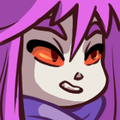 ) to mess around in dangerous areas. As much as it’s a relatively small game world with simple mechanics and not much dialogue, it does truly let you adventure around.
) to mess around in dangerous areas. As much as it’s a relatively small game world with simple mechanics and not much dialogue, it does truly let you adventure around.
Adventuring around is also really fun, because by contrast to Wizardry which just game-overs you if you wipe, DraQue simply returns you to the castle with half your money gone. In a game where the final shield is so overpriced this might seem rude, but it’s one of the things the game does to sand down some of the REALLY “rough edges” of its cRPG ancestors, which is nice honestly. I don’t think the intense brutality of the old Wizardry games is inherently a bad thing, but I find DraQue to be relaxing and chill to play.
Even though DraQue is pretty old, it’s not that cryptic, especially not compared to Dragon Quest II. There are one or two things you might want a guide for, and the game came with one in the US so why not keep one around? I honestly got lost more in Final Fantasy VI, though. I found it pretty easy to wander between important points and find cool stuff. The game freely allows that wandering, so why not?
I guess Dragon Quest doesn’t really need defending–I know, this entire spiel is really inexplicable  –it is, after all, so ancient that it is immune from criticism. It feels weird though because despite that, it’s a game with kind of a bad reputation in english-speaking gamer communities. Famously Nintendo resorted to giving the thing away to upsell their adver-magazine, and copies of it could still be bought at internal Nintendo sales as late as 2001. Dragon Warrior actually sold within spitting distance of the first Final Fantasy though, about 500,000 units, so I don’t really get how that’s a failure. Pretty good for a NES game, they couldn’t all be Excitebike. Nowadays it’s pretty much treated as a curio, something you study rather than play, and nerds will recommend you go play the (slower, even easier) remakes on Game Boy Colour or Super Famicom. I can at least say that a re-translation patch is nice, because Dragon Quest has funny little spell names (e.g. Dragon Quest V’s wind attacks are named Woosh, Swoosh and Kaswoosh) that the original Dragon Warrior localisation loses entirely. The original english version is of unnaturally high quality for the time though, and if the goofy ye-olde-thou script appeals, go for it.
–it is, after all, so ancient that it is immune from criticism. It feels weird though because despite that, it’s a game with kind of a bad reputation in english-speaking gamer communities. Famously Nintendo resorted to giving the thing away to upsell their adver-magazine, and copies of it could still be bought at internal Nintendo sales as late as 2001. Dragon Warrior actually sold within spitting distance of the first Final Fantasy though, about 500,000 units, so I don’t really get how that’s a failure. Pretty good for a NES game, they couldn’t all be Excitebike. Nowadays it’s pretty much treated as a curio, something you study rather than play, and nerds will recommend you go play the (slower, even easier) remakes on Game Boy Colour or Super Famicom. I can at least say that a re-translation patch is nice, because Dragon Quest has funny little spell names (e.g. Dragon Quest V’s wind attacks are named Woosh, Swoosh and Kaswoosh) that the original Dragon Warrior localisation loses entirely. The original english version is of unnaturally high quality for the time though, and if the goofy ye-olde-thou script appeals, go for it.
Honestly though, while it could be that I just have really weird brainrot, I enjoyed playing Dragon Quest a lot. It was breezy and cool! It’s famous even in the west, but I don’t think it gets enough credit as an actual game that is fun. Feels weird that western gamers dismiss this, it would kind of be like if you said the original Super Mario Bros had ‘aged badly’ and wasn’t worth playing, or some shit. The game does have one or two quirks that are just genuinely weird, age-related things; for example the keyboard-spanning commands of Ultima haven’t been condensed into the first Final Fantasy’s single A-button “interact” yet, so DraQue has separate commands for Talk, Search, Door and Stairs. I still think it’s pretty silly to play Dragon Quest (or any retro RPGs, perhaps) without appreciating just how carefully Chunsoft had to handle cutting early cRPGs down to something both technically feasible and enjoyable to play in 1986. Dragon Quest is famous because it’s pretty good.
I try to keep note of games that people say are “aged badly” or “archaic” or other stereotypical things like that, mostly because under a clusterfuck UI, the original Fallout is really good! People will say “oh the UI is too weird why is the interact menu a weird click-drag thing” but Fallout rules!  This has also led me to stuff like Tactics Ogre, and I got to Dragon Quest this way as well. Banger games that people will claim are too old to play. DraQue really improved my confidence toward old stinky games again, as each of the other examples has. Surely, if people say Dragon Quest is so ancient and smelly and basic and hard to approach, but it actually kinda rules, I can dig into anything, right? Learn how to work the keyboard controls on Ultima III Exodus? Mess around with Eye of the Beholder? It’s to the point that I take “eugh this game is so old/aged badly/etcetc” as half a recommendation now, and I’m excited to try more old and obscure games once I stop playing so much fuckin Dragon Quest. (send help
This has also led me to stuff like Tactics Ogre, and I got to Dragon Quest this way as well. Banger games that people will claim are too old to play. DraQue really improved my confidence toward old stinky games again, as each of the other examples has. Surely, if people say Dragon Quest is so ancient and smelly and basic and hard to approach, but it actually kinda rules, I can dig into anything, right? Learn how to work the keyboard controls on Ultima III Exodus? Mess around with Eye of the Beholder? It’s to the point that I take “eugh this game is so old/aged badly/etcetc” as half a recommendation now, and I’m excited to try more old and obscure games once I stop playing so much fuckin Dragon Quest. (send help 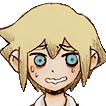 )
)
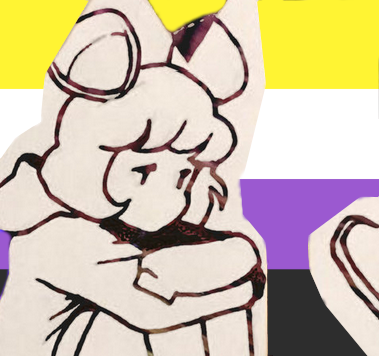 3·14 days ago
3·14 days ago
